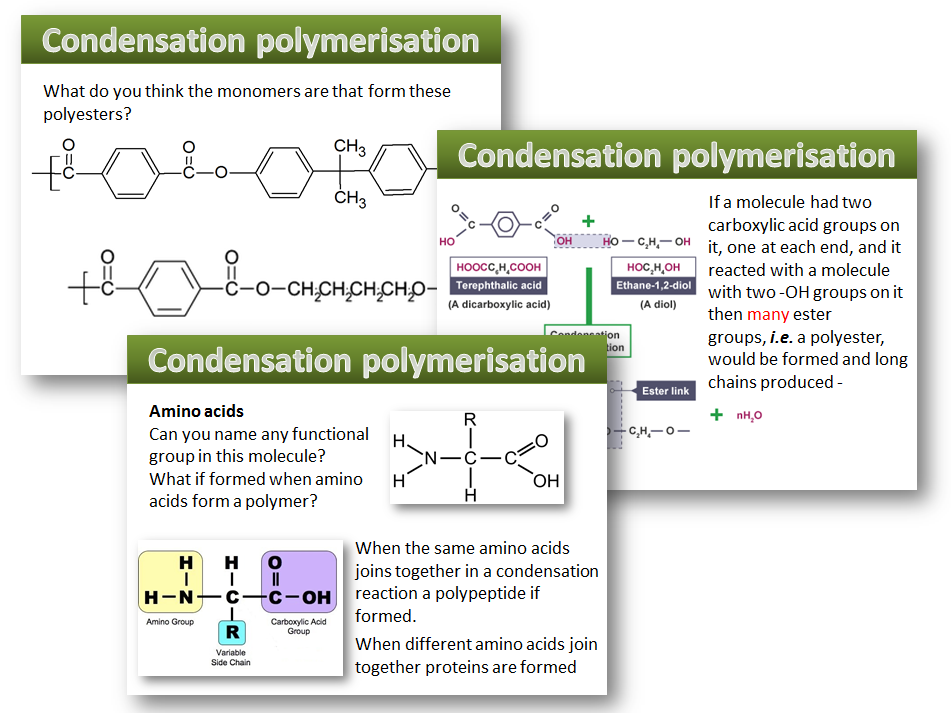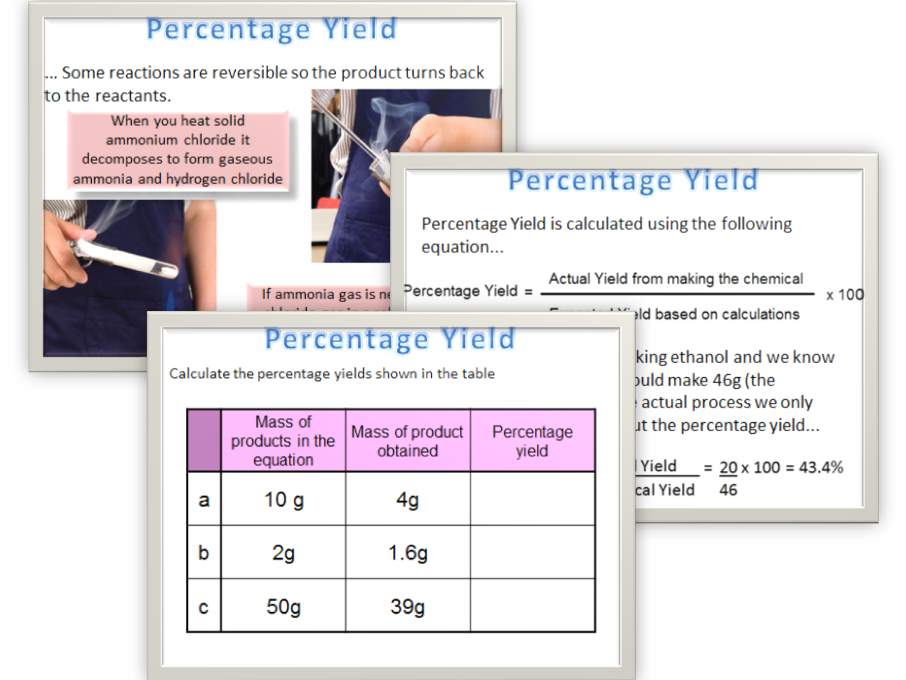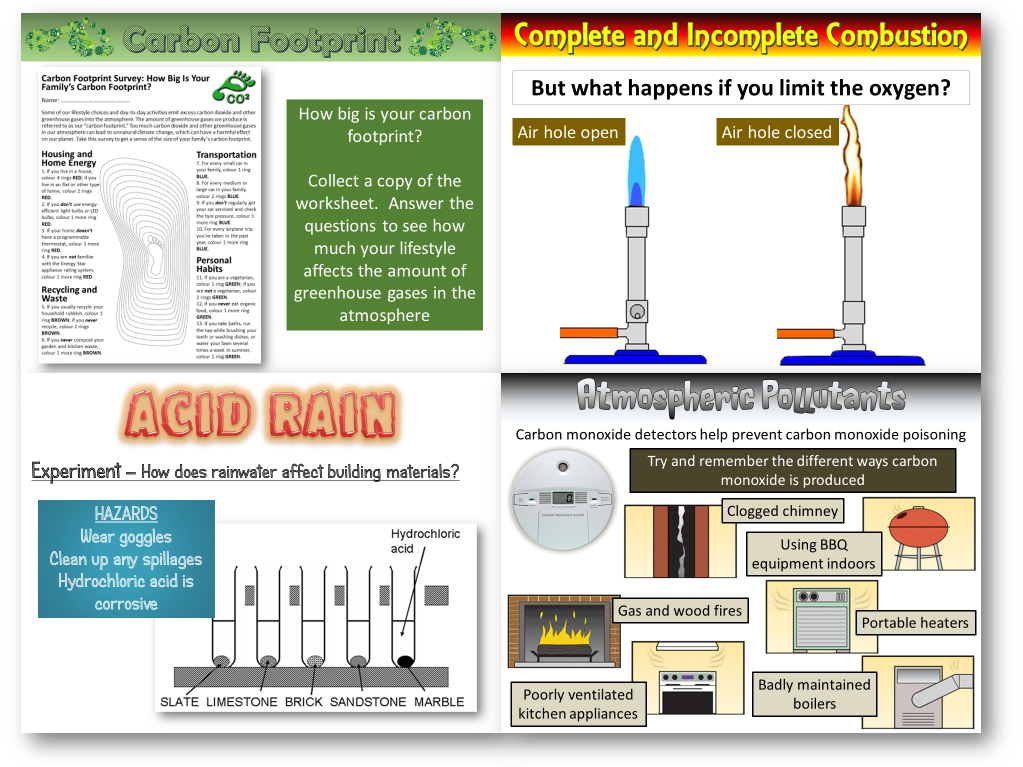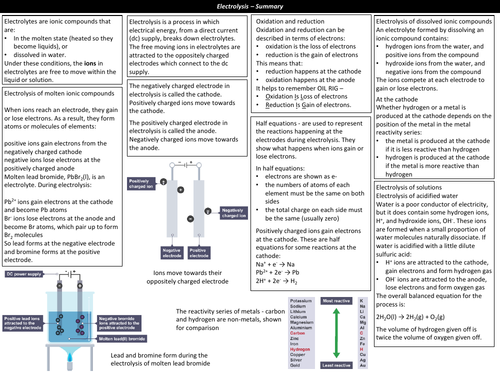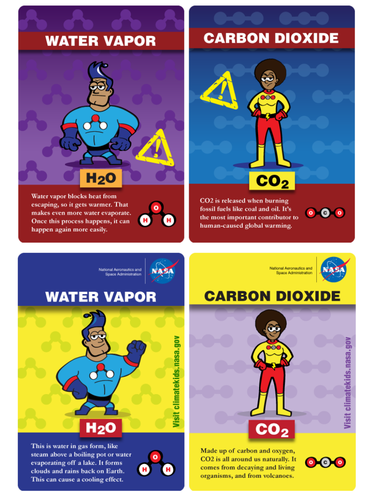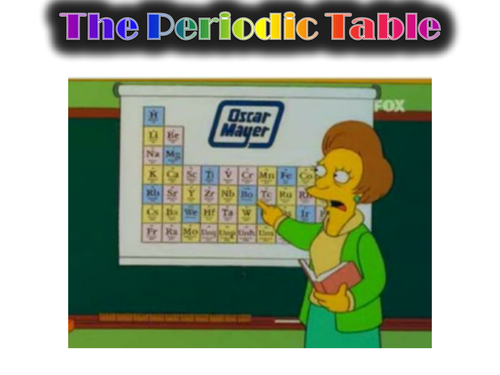
133Uploads
192k+Views
312k+Downloads
Chemistry
Bundle

KS3 Science homework
35 homework tasks for KS3. Each presentation has 3 slides. Slide 1 is the pupil sheet, slide 2 contains the mark scheme and slide 3 has suitable comments to use give a target on how to improve scientific knowledge.
Taken by an OFSTED inspector to give to a school as an example of good practice for a school in special measures

Condensation polymerisation
A presentation with questions linked to the Organic Chemistry unit of the new AQA 1-9 course. There are assessment opportunities and worksheets that can be printed from the PowerPoint

AQA 2016 Chemistry/Trilogy - Phytomining and Bioleaching
A series of resources on bioleaching and phytomining. There is enough material for 2 or 3 lessons depending on lesson length. Plenty of opportunity for pupils to assess their own understanding and work in groups. All answers to activities are included in the presentation. The presentation takes pupils through both processes in a visual way before checking their understanding

AQA Trilogy / Chemistry - Collision Theory
A fully resourced lesson including answers to introduce collision theory for the rate and extent of chemical change unit. Lesson 1 for this unit
Bundle

AQA - Energy Changes
4 lessons for the AQA C5 unit suitable for the whole of the Trilogy Unit and the first part of the Chemistry Unit. The bundle also includes the resources for the required practical on temperature change

Percentage Yield
A lesson taking pupils through how to calculate percentage yield and the reasons why percentage yields are sometimes lower than expected. There are also some worksheets for pupils to complete. I print this on A5. The final activity is a 6 mark QWC question on sustainable development and percentage yield
Bundle

AQA - Chemistry of the atmosphere
9 lessons to take students through the syllabus requirements for the chemistry of the atmosphere unit if studying for the trilogy exams or chemistry exams.

Electrolysis summary sheet
A summary of the key ideas of electrolysis for students to use as a knowledge organiser or revision sheet. I have used it for cover lessons where pupils are asked to create flash cards in lesson and then learn for homework, ready for a test next lesson.

AQA Trilogy / Chemistry – Bond Energy Calculations
The fourth lesson in a series of 4 for the C5 topic – Bond energies are discussed and the combustion of methane is used to take pupils through the process of bond energy calculations before examples are provided for the students to try. A fully resourced lesson that can be taught stand alone. Answers are included.

AQA Trilogy / Chemistry – Uses of Exo and Endothermic Reactions
The second lesson in a series of 4 for the C5 topic - Energy Changes. The everyday uses of exothermic and endothermic reactions are discussed and I usually bring in examples of these for the pupils to see / touch. The presentation has several examples and also an extended written question to compare a single use hand warmer with a reusable one. The lesson is fully resourced and can be delivered as a stand alone lesson

The Greenhouse effect
A fully resources lesson with a presentation about the greenhouse effect. Keywords are discussed. The main gases responsible for the greenhouse effect are introduced with an activity to research each gas and its effect. This lesson is suitable for KS3 and KS4

AQA Chem / Trilogy - Complete and Incomplete combustion
A fully resourced lesson on the topic of complete and incomplete combustion. The concept of incomplete combustion is discussed and compared to complete combustion, before the environmental / human impact of each is considered. Lesson 6 in a series for the AQA chemistry of the atmosphere unit, but can be taught as a stand alone lesson

Revision clocks - Chemistry paper 2 - AQA Trilogy
The last 5 units for the Chemistry Paper 2 split into sub sections. Pupils are to spend no more than 4/5 minutes on each section to try and ensure that the whole of a topic is covered.

AQA The Alkali Metals
Presentation and linked worksheets to teach the subject content of the alkali metals for the new 2016 AQA Trilogy / Chemistry GCSE

Catalysts lesson and experiment
A fully resourced lesson on catalysts with questions on a worksheet for pupils to answer, linked to the presentation and an experiment to carry out

New AQA Chemiistry / Trilogy - Building and comparing models of alkanes
A fully resourced lesson on building hydrocarbons. Pupils can be shown molecular models of hydrocarbons or build them themselves before looking at various ways to represent molecules such as ball and stick, and space fill models. An information sheet and comparison table are also provided so that pupils can look at the advantages and disadvantages of using each representation of the alkanes.

Alternative fuels
A lesson looking at the need to find alternative fuels to replace fossil fuels. The advantages and disadvantages of different fuels are considered.

Loop presentation of different Periodic Tables
I use this looped presentation at the beginning of a lesson whilst I am taking the register

What pH?
Print the pH numbers on different colours of card if available. Print out the different everyday substances and cut them out. Give each child a different substance and get them to guess the pH of the substance. Show the PowerPoint presentation about the pH of the different substances to see if they were right. The final slide gives you a chance to ask pupil if they can spot any similarities between acidic, alkaline and neutral substances

Atoms and elements - Element exhibition
Get as many samples of elements as possible and use to introduce the idea that there are different elements and how they differ. A presentation and accompanying worksheets are included. Test tubes of air can be labelled as gases etc. If needed


